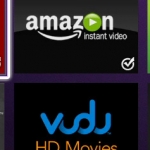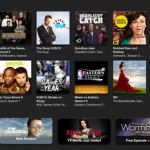
It’s that time of year when television networks hand out show renewals like they were Golden Tickets to Willy Wonka’s candy factory.
For fans of science fiction and fantasy, it’s a scary time of year. It seems as if “our” shows are always the ones on the bubble, the first to go from the “maybe” list. If it’s a toss-up, we believe the show we support is more in danger than a non-genre show. Every time the axe of cancellation falls, the reason shoved down our collective fan throats is “low ratings”. Some part of us knows, deep down, that this phrase isn’t quite the truth. We know what ratings are, and we read the posted numbers for our favorite shows. Many times, those sent too early to cancellation purgatory are pulling the same ratings as other similar shows that do get renewed. What’s the deal? What makes the difference?
This year, one of my favorite shows, Warehouse 13, has not yet been given its Golden Ticket for renewal. The second half of its fourth season has premiered, timed to coincide with the May “sweeps”. For 3 ? seasons, the Syfy network has considered the show one of its major hits. What changed? Yes, its total ratings number has experienced a drop, but it has not been a huge drop. So why do networks seem to not give new shows a fighting chance and become turncoats for shows that possess a loyal audience?
Well, the answer is ratings, but that’s where it gets tricky and complicated.
I’ve narrowed it down to three components: The Dinosaur, the Dirty Little Secrets and the Disconnect.

The Dinosaur in the Room
The Dinosaur is the ratings system used by the American television industry, commonly known as “the Nielsens”. To begin, let’s take a short look back at how this situation developed. Television networks in the United States were set up as privately owned companies and essentially have remained private companies. In today’s market, once one peels back all the layers, most of the broadcast and cable networks are owned by huge corporations. Some corporations that own networks have sold stock in their company and retain shareholders, but they are still private. “Private” means they are not supported by money from the government. For a private company to stay in business, it must make money — a profit. Somewhere along the way, television networks began to rely on the advertising industry to make most of their profits by selling advertising space during the airing of television shows. The first television ad was a 10-second Bulova watch commercial that aired before a Brooklyn Dodgers game in July 1941.
A symbiotic relationship was born. Networks could make money selling ads. Advertisers could reach a larger number of people than ever before with one advertisement. But, those paying for advertising time wanted a tracking system that would show them the numbers being reached. The Nielsen Media Research company was already a name for tracking stats in the radio industry. At the time, they were a progressive company open to new technology and opportunities. The system Nielsen developed to track the numbers of viewers at a given time was implemented in 1950. No other had any comparable system, not at all like the technological rivalry and competition most of us have grown up with between companies like Microsoft and Apple. The Nielsen system of rating shows became the industry standard, and both the television and advertising industries have become co-dependent on those numbers and each other.

The Way it Works
How does the Nielsen company compile those hard to understand statistics and numbers? Take a deep breath and dive in because it’s all a numbers game.
The main process used is sampling. Sampling is basically a form of market research poll. However, the Nielsen Company maintains strict standards for the selection of those in the sample group. The composition of the group is based on the latest figures for demographics in the United States. Racial percentages, social/economic levels, and geographic location (urban, rural) are the main demographics used to create the sample group. The goal is to track the viewing habits of a representative sample of the U.S. population.
The best current estimation of the population is 310 million. The number of current Nielsen households is somewhere in the ballpark of 20,000-30,000, and includes about 100,000 individuals. That’s the total number for the entire country. So the sample size is approximately 0.032% of the population. The Nielsen Company maintains this is an adequate number because of the careful selection they conduct. The specifics of the selection are a closely held secret by the company. When a household is selected, they are contacted by a representative of the company and asked if they are interested in becoming a “Nielsen family”. They do have the right to say, “No thanks.” A household can be a member of the sample for two years. If the composition of a household changes during this time, they are removed from the sample and replaced. Nielsen measures viewing in a household through their set meters and People Meters.
The set meter records what network is being watched at a particular time of day. The People Meters keep track of who is watching when. However, the People Meter requires each person to press a certain button every fifteen minutes. If that doesn’t happen, the meter is programmed to no longer count that person as an active viewer. In some areas of the country, paper diaries that require viewers to write in what is being watched and who is watching are still utilized. At 3 a.m. local time, the meter sends the information to the Nielsen Company.

Who are these Nielsen families, and why have most of us never been chosen as or met a Nielsen family? The biggest single reason is one of the catches to being selected as a Nielsen family is you can’t tell anyone you’re part of a Nielsen family. With such a small number of people, statistically you would have to meet around 3,100 people before you encountered someone who was part of the sample. If you or a member of your family have worked in the television or advertising industry, you’re pretty much disqualified to be a Nielsen family. These protocols exist to curb possible influence and bias in a household’s television viewing. In my own life, my family was always disqualified because I worked in television. I’ve only had one friend who has admitted to once having been a part of the elusive “Nielsen family” club many years before we met. I live in the area of a higher-ranked Top Ten media market and have read in local media that the number of “Nielsen families” represents less than one quarter of the total households with televisions. The Nielsen company estimates the total national number of households with televisions at 114.2 million, 96.7% of the population.
Four times a year — November, February, May and July — a period occurs that has become known as “Sweeps”. During that time, the Nielsen company increases the sample size by sending out viewing diaries to larger numbers of television households. The company processes over two million handwritten diaries per year.
With all the data collected, they compile those all-important “ratings”.
Ratings measure total number of viewers over two years old and break them down into overall categories, mostly by age of the viewers. The numbers can also be broken down into the numbers of men and women. I’m not going into detail on those — the information can easily be looked up. I’m going to concentrate on what the breakdown of a rating means.
You look up a show you’re interested in and see this rating: A18-49: 2.5/9.
The formula is this — demographic: rating/share.
The demographic is who was watching a certain show. In the example, it’s adults ages 18-49. The rating is the percentage of an entire demographic across the total population of the country that was watching. This means 2.5% of all adults in this category were watching the show. The share measures the percentage of people in the demographic who were watching television at a particular time and tuned in the show. For our “show”, 9% of the people in the demographic who were watching television at that time were watching that show.
In other words, the rating is the percentage of the total population of TV households tuned to a particular program. The share is the percentage of televisions actually in use. By and large, these are the ways and things that are measured by the “Nielsen” ratings. I warned you it was complicated.

Dirty Little Secrets
The biggest criticism of the Nielsen Company is that their system is outdated and does not reflect the true numbers of viewers for certain shows. The company has not kept strides fast enough with the changes in technology and the ways technology has changed television viewing. They have added certain categories to ratings like Live+3 and Live+7, which add in the views for recorded viewing within 3 or 7 days after the live airing of a show. Even though the company is developing a methodology to track viewing over all platforms, they are behind the curve. Let’s face it, they still rely on handwritten diaries to track a percentage of viewing. I have trouble remembering to write everything on my grocery list each week.
By all reports, though, those who work for the Nielsen Company are genuinely nice people who believe in the validity of their system. Hard to completely dislike that kind of attitude.
The big “dirty little secret” of ratings is this: The total number of viewers, or popularity, of a show doesn’t matter. Some ratings matter more than others. You don’t hear networks touting those numbers to the public.
Because advertisers aren’t interested in how many people are watching a given show. Because they are interested in how many people are seeing their commercials, and who is seeing their commercials. Because they are the ones with the money to spend, networks listen to the ad buyers. Until 2007, the time breakdowns for each period was used as the standard to measure how many viewers were watching during commercial breaks and between shows. In 2007, the Nielsen Company introduced a new ratings category, the C3. The C3 is a specific rating for the number of viewers during a commercial break for a show. That’s the number that interests advertisers.
Beyond the C3 rating, the other metric that advertisers pay attention to is the A18-49 category. Again, this is one of those grandfathered ideas that is no longer necessarily true. But its “truth” is so entrenched in advertiser thinking that it shapes their reality. The ideal is that these are the people with money to spend that can be influenced in their spending by an advertisement. A show that has fewer total viewers than another can charge more for advertising if they have a higher 18-49 rating.
According to Nielsen’s own data, the number of traditional television households is declining each year. The estimate for decline for the 2012-13 season is around 475,000. The company has even coined a term for non-television owning households, “zero-television household.”

Next Time
Friday evening, as I was still compiling this article, the five broadcast networks announced cancellations and renewals for the past season. Seventeen shows were cancelled, including several that showed promise or had been powerhouses for their networks, like newcomer Vegas and CSI:NY.
This week is what is known as “upfronts” week, when all the networks reveal their planned show line-up for 2013-14 to the press.
In the next article, I’ll look at what Nielsen is doing to bring themselves into the modern age of television viewing. We will break down other elements that go into a network’s decision to renew or cancel a series, how cable networks fit into the picture, and the effect Live+7 has on the numbers.
The premiere of Warehouse 13‘s second half of Season 4 pulled a 0.5 demo rating with 1.51 million total viewers. The series’s third season, when it aired in the 9 p.m. ET slot and wasn’t pitted against hit broadcast network shows like Castle and Hawaii 5-0, averaged a .74 rating in 18-49s with 2.09 million viewers. The season wasn’t split in half, either. The Syfy network considered it one of their successful anchor shows. In March, Warehouse 13 show runner and exective producer, Jack Kenny, tweeted that when Live+7 numbers are added, the ratings increased by 127%. That is quite a disconnect from the Nielsen live ratings, and that’s the third component I mentioned above, which is what I’ll be discussing next time.






